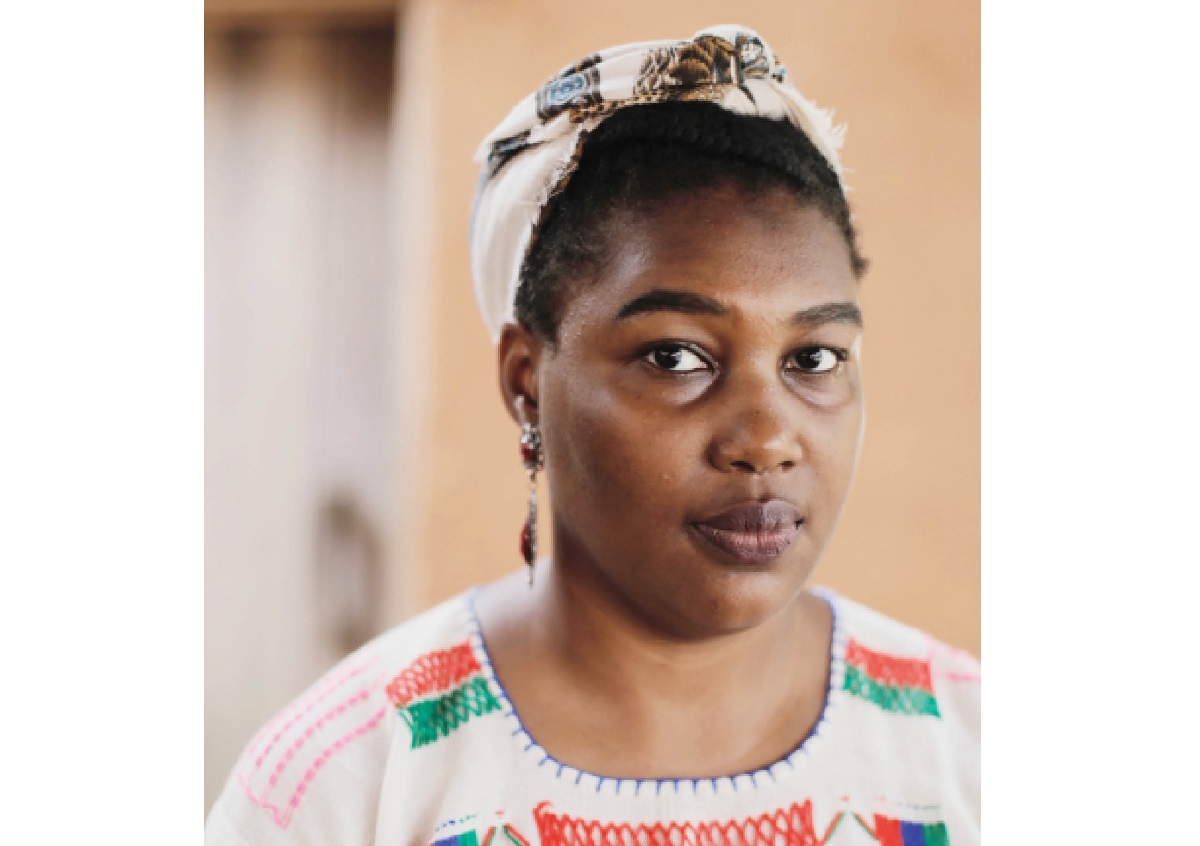How I found my voice through photography – Rahima Gambo
Rahima Gambo is a Nigerian photographer and artist whose work ranges from the everyday to social issues. An independent photojournalist, she often experiments with other art forms, such as drawing, video, sculpture and installation. In 2017 she was a part of the prestigious Joop Swart masterclass and was shortlisted for the Contemporary African Photography Prize, […]

Rahima Gambo is a Nigerian photographer and artist
Rahima Gambo is a Nigerian photographer and artist whose work ranges from the everyday to social issues. An independent photojournalist, she often experiments with other art forms, such as drawing, video, sculpture and installation. In 2017 she was a part of the prestigious Joop Swart masterclass and was shortlisted for the Contemporary African Photography Prize, the Africa Media Works Prize and nominated for the FOAM Paul Huf Prize. In 2017 she won the Fourthwall photobook award, to publish a photobook based on her long-term project ‘Education is Forbidden’. In 2018 she was selected as a World Press Photo 6×6 Global talent. Art & Ideas caught up with her for a chat.
In 2018 you were selected as a World Press Photo 6×6 Global talent. How did you receive the news?
As a photographer, most of the work I do is usually solitary and in a quiet manner. So, I was pleased to know that the work I had undertaken over the last four years in Nigeria had been recognised by the World Press Photo, an organisation based in Amsterdam.
Annually the 6×6 Global Talent Program identifies six under-recognized talents from each of the world’s six continents, and connects them to a global audience. What was the experience like?
As it is with awards, you are recognised and celebrated for a little bit of time and then everyone’s attention moves on. I’m back to work as usual. The only thing is that people know my work a little more than before.

What inspired the Tatsuniya series and what are you trying to say?
The ‘Tatsuniya’ series is a continuation of the ‘Education is Forbidden’ project, only that it goes beyond mere observation and documentation. In the series I collaborated with a group of school girls to overwrite a narrative of conflict, victimhood or survival. While I was writing and shooting the Education is Forbidden project, I realised that I was producing a historical record, and in a way constructing a story about student experience that was only a fraction of who they were or what they were experiencing in their lives at that time. I wanted to add to this documentation, but this time capture something else about their lives, that was open ended; open to other possibilities.
In ‘Education is Forbidden’, aside the fact that your images focused on students, there were also a few videos. Kindly share your experience working on that particular project. What did you hope to achieve?
‘Education is Forbidden’ was my first longform multimedia documentary project that aimed at finding out how students who were still attending schools and universities were experiencing the conflict. It was an attempt to find my voice as a visual storyteller who had just graduated from Journalism school. It took me two years to complete, and during those years I grew in my thought process from trying to relay information to wanting to record experience.
How has the independent terrain treated you so far as an independent photojournalist?
Working independently means I get to choose the type of subjects I focus and work on. It calls for a certain type of discipline and passion that gets one through the days.
Aside photography, you delve into drawing, video, sculpture and installation. How did all these begin for you?
I started making installations, videos, drawings and sculptures so that I could further delve into my projects. Working with multiple media is part of my process of peeling back the layers of a question or subject I’m investigating. I started experimenting with media besides photography in a very intuitive and natural way. I felt like the subjects I was focusing on called for me to expand my practice and go into new terrain.

2017 was certainly a good year for you. You were a part of the Joop Swart masterclass and was shortlisted for the Contemporary African Photography Prize, the Africa Media Works Prize and won the Fourthwall Photobook Award, to publish a photobook based on your long-term project ‘Education is Forbidden’. How did all these enhance your career as an artist? What’s your opinion about the role of awards in the life of an artist?
Awards are important, especially if you are a photographer or visual artist working in a remote geographical area. They give validation, recognition and merge you into a wider community of visual artists working around the world. But awards shouldn’t be the reason why you work. There are creators out there who have been working for decades on a single topic and are only now gaining recognition.
What are you working on at the moment?
At the moment I am working on a conceptual psychogeographical visual series called ‘A Walk’ that investigates the relationship between myself as a visual author and my environment. It is a series about the difficult process of trying to create a documentary series about female suicide bombers and also highlights the limitations of the language of photography and Journalism to decipher or explain traumatic events.
How would you describe your art?
It’s photography with a conceptual filter.
